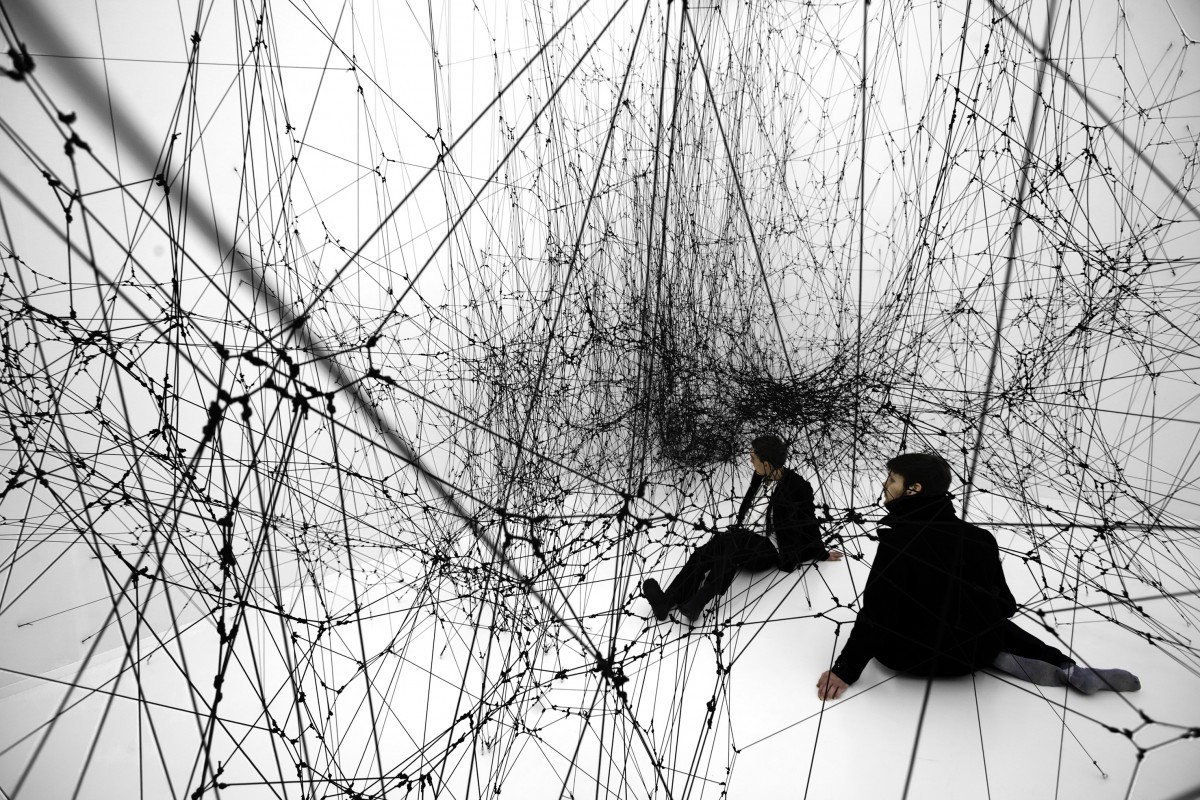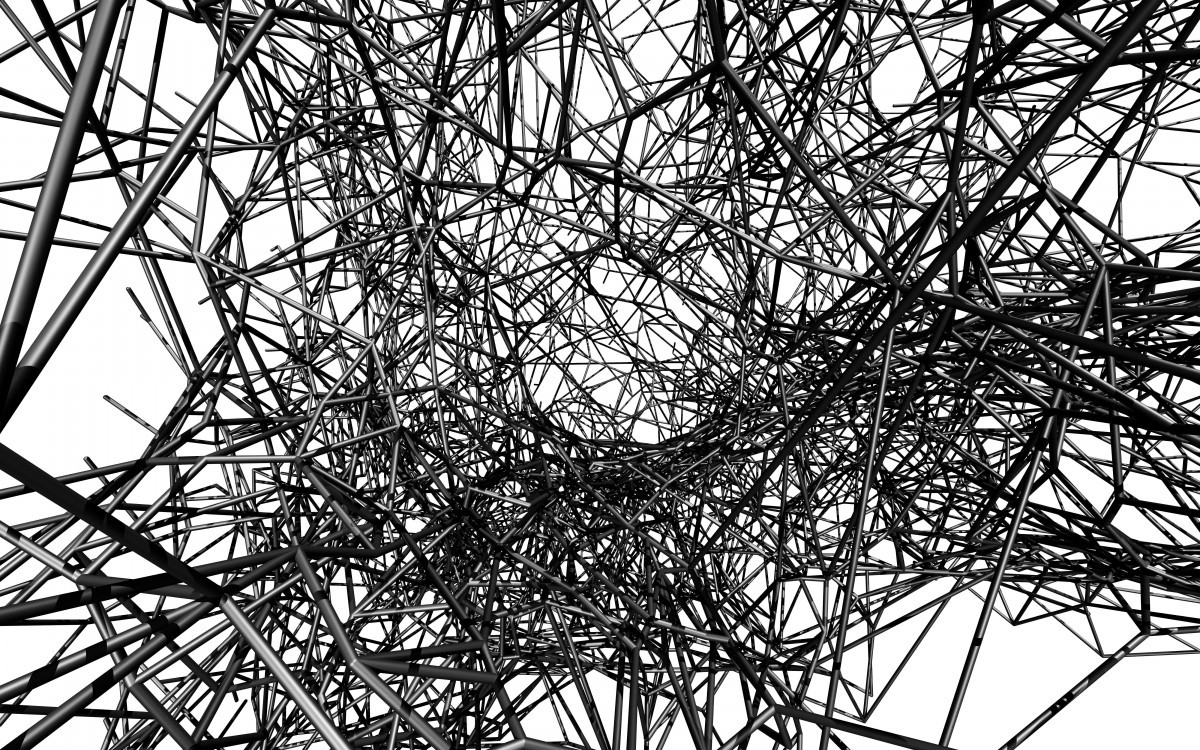In their recent talk at the MIT Museum “Reverberations: Spiders and Musical Webs,” CAST Visiting Artist Tomás Saraceno and MIT Professor Markus Buehler (Professor and Head, Civil and Environmental Engineering, MIT) discussed their research in materials and structures inspired by the intricate geometry of spiderwebs. Using the data from his digitally captured three-dimensional spider web, Saraceno reconstructed the web 16 times its original size for his installation 14 Billions (Working Title), 2010. Buehler’s lab created a computer simulation of the data set generated by this project to reveal how the strands behave and interact in the physical web.
Saraceno, developed an original tomographic method,1 using a laser sheet, to scan a three-dimensional web built by Latrodectus mactans. This pioneering technique made access to the complete and accurate three-dimensional data of a spider web possible for the first time. Such data is useful for architects and artists, but also for arachnologists, evolutionary biologists, ethnologists, physiologists and engineers.

Saraceno envisions sending spiders into space as another aspect of his ongoing research into spider webs. In 2009, he spent time at NASA Ames and proposes2 to investigate the ability of spiders to make 3-dimensional webs in microgravity by sending six specimens of three species of spiders in vials on a six-month space mission to construct webs, which would then be scanned for three-dimensional analysis. Saraceno says that when he was at NASA, Gilles Clement pointed out, “Well, Tomás, now that you have found a way to scan these webs in microgravity, you just need someone to make sense of the data.” That is precisely what he hopes Markus Buehler can contribute to the team.

In this panel, Buehler discussed the molecular structure of the proteins in spider’s silk and how art and engineering can function as mutually beneficial modes of discovery. He addresses this topic in his recent book Biomateriomics, which examines biological material systems and the transfer of biological material principles towards biomimetic and bioinspired applications. Applying biomateriomics can unlock nature’s secret to high performance materials such as spider silk, bone, and collagen. “Spider silk is one of the strongest materials known. In fact, it’s strength is about that, or even larger, than the strength of steel,” Buehler observed. Despite its strength, spider silk is almost 100% composed of proteins, which are simple, weak building blocks. Explaining how the silk gets so strong, Buehler said, “It’s not because the proteins are so strong, but because of the way these proteins are connected and the way they form patterns.” Understanding the chemical bonds of spider’s silk can potentially be useful for unconventional approaches to design problems. Dr. Zhao Qin, a research scientist in Civil Engineering at MIT, demonstrated the analysis of Saraceno’s data with the computer model developed in Buehler’s lab, which revealed the elasticity and tension of the black widow’s web that the artist scanned and the resulting installation he created.

Building on his recent fascination with social spiders and their webs, Saraceno is currently working on a collaborative installation that would use a three-dimensional spiderweb as a musical instrument to embody the incredible structural properties of spider’s silk.
During this recent visit to MIT, Saraceno began discussing the structure of this web-inspired instrument with Markus Buehler, and other aspects of these musical webs with Evan Ziporyn (Faculty Director of CAST and Kenan Sahin Distinguished Professor of Music, MIT) and CAST Visiting Artist Arnold Dreyblatt (Professor of Media Art, Muthesius Academy of Art and Design).

This event was co-sponsored by MIT Center for Art, Science & Technology (CAST) and the MIT Museum.
Moderator:
John Ochsendorf, Class of 1942 Professor of Architecture and Civil and Environmental Engineering, MIT
Participants:
Tomás Saraceno, CAST Visiting Artist
Markus Buehler, Professor and Head, Civil and Environmental Engineering, MIT
Foonotes:
2. ILSRA-2009-1049, 3D Spider Web in Microgravity, Artist and Architect Tomás Saraceno, Professor Gilles Clement (International Space University, France), Dr. Peter Jaeger (Senckenberg Research Institute, Germany), Dr. Rolf-Dieter Dueppe (Technische Universität Darmstadt, Institut für Photogrammetrie und Kartographie, Germany), Professor Samuel Zschokke (University of Basel Section of Conservation Biology, Swiss)
